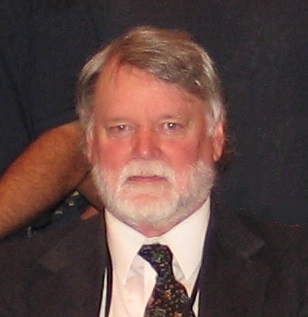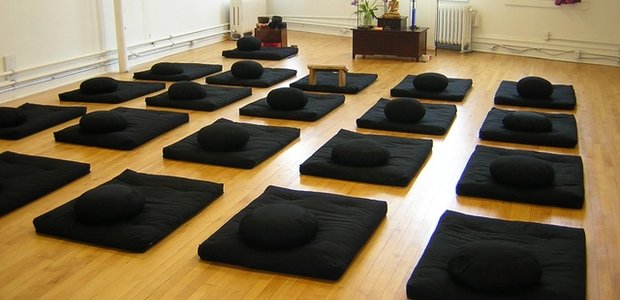By Blaze Compton
Guest writer for Wake Up World
For the past five years, myself and a couple of colleagues have been going into a handful of major US state prisons and teaching inmates how to transcend. Simultaneously, we help conduct scientific research on the effects of regular transcendence on the criminal mind.
By transcending I mean – for a few minutes every day – effortlessly and spontaneously turning the attention inwards and experiencing progressively more subtle stages of mental activity until the mind has the experience of the least active, most settled mental state. Then, just as easily and effortlessly, taking one final step and transcending – leaving the experiencer at the thought-free source of thought – an area of life beyond the mind and variously referred to by yogis, masters, and spiritual teachers as Pure Consciousness, Samadhi, The Unified Field, Nirvana, the Peace that Passeth All Understanding, I AM THAT I AM, etc. etc.
It is important to understand that transcending, in the sense that it is used throughout the list and in this article, refers to a very unique and specific style of functioning of the mind and body. When a person genuinely transcends – in other words, when a person actually leaves the thinking, perceiving, conceptualizing, feeling, visualizing, intuiting mind behind and “steps into” the realm of Pure Consciousness (consciousness conscious of consciousness), that person’s body responds by simultaneously and naturally producing what some neuro-physiologists call the Wakeful, Hypometabolic Physiologic State, or WHPS for short.
The WHPS, because of its physiological uniqueness (its characteristics do not match the three commonly recognized states of human consciousness – the Waking State, the Dream State, or the Deep Sleep State) and because it cannot be duplicated or induced by hypnosis, suggestion, neuro-entrainment, or any other known means, some progressive researches have called this transcendental state the 4th major state of human consciousness.
Forty years of research informs us that the WHPS associated with transcendence is not found in the vast majority of meditation programs other than the Transcendental Meditation Technique as taught by Maharishi Mahesh Yogi – TM for short. That is what we teach inmates.
Researchers have seldom found the other meditation practices and when it is found the practitioner reports doing their practice for 10, 20 years or more. For example, published research indicates that it has only been found once in an individual practicing Mindfulness Meditation. It is routinely found in the research subjects who have been practicing TM – and is unmistakable after 4 months (on average) of TM practice.
In my opinion, Transcendental Meditation should not be considered a meditation program because the process of transcending begins where most meditations end. The word “meditation” in the West conjures up concepts of clearing the mind, focusing, concentrating, controlling the mind, paying attention to the breath, watching thought, noticing the content of the mind, etc. Transcending (what the inmates learn and practice) has nothing to do with any of that.
I tell new inmates who want to learn TM that “we do not teach meditation in our classes – we teach you how to transcend.” That is, we teach inmates how to “go beyond” all mental, emotional, and perceptual activity while simultaneously allowing the body to slip into a state of very deep and emotionally nurturing rest (the WHPS).
And research shows over and over again that the WHPS is, in many respects, 2 to 3 times as restful as deep sleep. That is why I like to call the rest available during WHPS “SUPER REST”.
For instance, moving from the waking state to deep sleep, oxygen consumption drops, on average, about 8%. However, moving from the waking state to the WHPS of transcendence, oxygen consumption drops on average by 20%. Much deep rest.
According to our offender rehabilitation research and the research conducted by other teams investigating transcending’s influence on criminal thinking over the past 43 years, just 16 weeks of transcending is enough to begin a major reordering of the criminal brain and nervous system to a more normal style of functioning that dramatically supports pro-social thinking and behavior. And by “more normal” I mean that the inmates nervous system and brain, after learning and practicing TM – sometimes after just a few short weeks – begin to operate with significantly less stress and less anxiety. In short, the transcending inmate begins to relate to life with dramatically reduced “subconsciously stored” emotional toxins.
One of our primary investigators wrote:
“The results of this randomized controlled study indicated significant reductions in criminal thinking errors, psychological distress, perceived stress, and trauma symptoms and increased spiritual wellbeing in offenders (who learned how to transcend) compared to standard care controls.”
A co-author on the research paper, a man not given to hyperbole and who had 20 years experience in the Department of Corrections applying research findings to criminal rehabilitation, had this to say: “After just 16 weeks of transcending – the results are stunning!”
As I kept sharing the benefits of daily transcendence with inmates and showing them published research articles and scientific papers that supported those benefits, I began to put together a list of benefits. Eventually my list got so big (and cumbersome) that I decided to find a professional source of a list of the benefits of transcending and share it with them. I found such a list in the work of Dr. David Orme-Johnson (http://www.truthabouttm.org) and Dr. Roger Chalmers (http://uk.tm.org)[2], both lifelong pioneers of the science of transcendence and higher states of consciousness.
The final product is published here. It is simply a reshuffled list of Orme-Johnson’s and Chalmer’s lists of some of the scientifically reported benefits associated with regularly allowing the human mind to transcend itself[3]. I say “some of the benefits” because the sources that I used were a few years old and did not include the very significant important published research of the past 5 years or more. In other words, the list is evolving and a more updated version will be available soon.
If you want to find out more about transcending I suggest going to the TM website www.tm.org or pick up a copy of the 2012 New York Times bestseller entitled Transcendence written by Norman Rosenthal, MD, a renowned psychiatrist and former senior researcher for the National Institutes of Health. (Learn more at: http://www.normanrosenthal.com)
Reader please note:
I present the list of references here in the format that it is not so much for reading or referencing, but more as an educational tool to introduce those who are not familiar with transcendence and the science behind it to the sheer immensity of that research. I think most readers, after perusing the list, will agree that the research does indeed bring to light the dramatic, incomparable power of simple, effortless, daily transcendence. I have highlighted some of the benefits listed above for ease of skimming, knowing that the list will rarely – if ever – be read through completely. Enjoy the list!
About the author:
 Blaze Compton, MA is a certified instructor of the Transcendental Meditation ® Program having studied over four decades ago in Europe and the US with Maharishi Mahesh Yogi, this generation’s foremost exponent and authority on transcending and the founder of the worldwide Transcendental Meditation organization.
Blaze Compton, MA is a certified instructor of the Transcendental Meditation ® Program having studied over four decades ago in Europe and the US with Maharishi Mahesh Yogi, this generation’s foremost exponent and authority on transcending and the founder of the worldwide Transcendental Meditation organization.
Inspired by research for his Masters degree in Applied Theology and many years as a prison program facilitator/volunteer, since 2009 Blaze has been the on-site director inside three Oregon state prisons helping to conduct research programs regarding transcending and criminal thinking. He also offers programs on transcending to the general public.
Email Blaze: [email protected]

If you've ever found value in our articles, we'd greatly appreciate your support by purchasing Mindful Meditation Techniques for Kids - A Practical Guide for Adults to Empower Kids with the Gift of Inner Peace and Resilience for Life.
In the spirit of mindfulness, we encourage you to choose the paperback version. Delve into its pages away from screen glare and notifications, allowing yourself to fully immerse in the transformative practices within. The physical book enriches the learning process and serves as a tangible commitment to mindfulness, easily shared among family and friends.
Over the past few years, Wake Up World has faced significant online censorship, impacting our financial ability to stay online. Instead of soliciting donations, we're exploring win-win solutions with our readers to remain financially viable. Moving into book publishing, we hope to secure ongoing funds to continue our mission. With over 8,500 articles published in the past 13 years, we are committed to keeping our content free and accessible to everyone, without resorting to a paywall.







